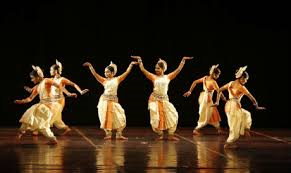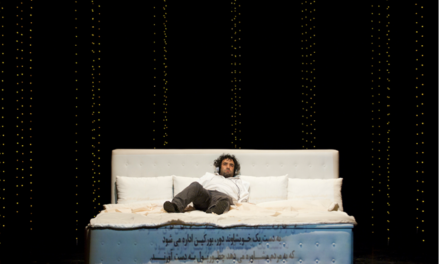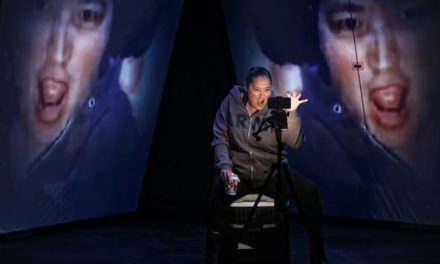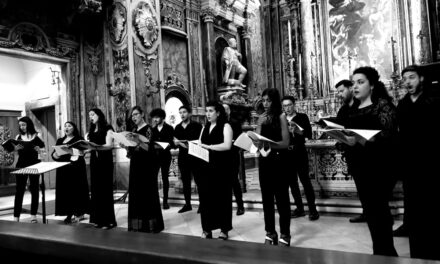Classical Indian dance performance Bishwas by Ratikant Mohapatra and Srjan Group explores female divinity, spirituality, and multiple religions.
The complex symbols of Indian dance may not be immediately understandable for people not too deeply familiar with the mythology or the language of gesture. Nevertheless, Srjan Group conveyed a number of powerful messages through pure movement in a dance programme named Bishwas (Faith), leaving a lasting impression on the audience.
Srjan Dance Group, represented by seven skillful female dancers and the master choreographer Ratikant Mohapatra, were invited to participate in the 2019 India By the Nile Festival. They gave two breathtaking performances at the El-Gomhoria Theatre in Cairo on March 10 and at the Sayed Darwish Theatre in Alexandria on March 11.
Being one of the nine classical dance styles currently recognized in India, Odissi looks like ancient temple sculptures in motion. But in fact, it is a relatively young dance form. This dance is believed to have been lost during the Islamic and British rule but was then reinvented in the middle of the 20th century after India gained independence. Based on the ancient treatises, temple sculptures, and local dance styles, Odissi represents the culture of Odisha, one of the 29 states of India, located in the east of the country.
The credit for reviving Odissi largely goes to the legendary dance guru Kelucharan Mohapatra. Summing up his lifelong work, in 1993 Kelucharan established Srjan, a repertory group and dance institute, which is led today by his son and disciple Ratikant Mohapatra. So we can say that this year Egypt saw pure classical Odissi dance from its very source.
Showing that Odissi is not a still form but a living and developing entity, the programme included innovative choreographies by Ratikant Mohapatra which were labeled “neo-classical.”
Kirvani Madhurima, a recent and innovative item in the repertoire, depicted the sheer joy that art gives to knowledgeable people. Based on raga Kirwani, which is a musical mode similar to maqam, the soundtrack for this group choreography included elements of Hindustani (northern) and Carnatic (southern) musical traditions of India.
Ratikant Mohapatra himself then did a solo performance of abhinaya — storytelling through dance. The myth of Shabari, an elderly woman of a low caste who meets her lord, the god Rama, after a life of devotion and prayers, could clearly be read through gesture and mime even by an audience not familiar with the plot. Swiftly turning from one character into another as the story unfolded, the 52-year-old guru demonstrated the skill of artistic transformation that transcends gender and age.
Then followed Bhagavati Stotram, a classical choreography by Kelucharan Mohapatra. Having changed their costumes, the dancers, now dressed in red and black, convincingly showed the fierce and gentle nature of female divinity. The goddess slaying demons and showering kindness onto her devotees was embodied on stage in seven perfectly synchronized dancers: Smt. Rajashri Praharaj, Ritu Sengupta, Pragna Parimita Das, Aishwariya Singhdev, Sipra Swain, Maya Krishnamurty, and Reebdhita Barua.
Bishwas, meaning “Faith”, was the final piece that gave the title to the program as a whole. The composition exploring the topic of Hindu, Muslim, Christian and Sikh religions, their similarities and differences, was based on poems of the medieval saint Kabir and Gurbani, the sacred hymns of the Sikhs. In this fusion piece one could see the images of whirling dervishes, the crucifixion, the sign of OM, but above all else the beauty of the human spirit, the harmony of a disciplined mind and a perfectly trained body that the artists represented.
This article originally appeared in Ahram Online on March 19, 2019, and has been reposted with permission.
This post was written by the author in their personal capacity.The opinions expressed in this article are the author’s own and do not reflect the view of The Theatre Times, their staff or collaborators.
This post was written by Maria K..
The views expressed here belong to the author and do not necessarily reflect our views and opinions.


















